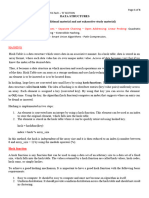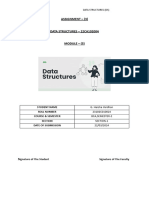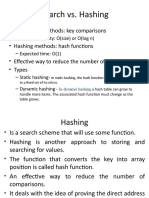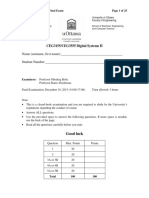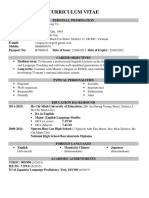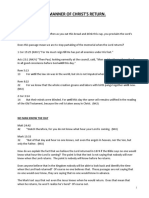0% found this document useful (0 votes)
17 views25 pagesAdvanced Data Structures Key - M.tech
The document outlines key concepts and operations related to advanced data structures, including heaps, AVL trees, splay trees, and hash functions. It discusses properties, applications, and algorithms such as the Knuth-Morris-Pratt algorithm, along with practical implementations for handling collisions in hash tables. Additionally, it covers the insertion and deletion processes in Red-Black trees, highlighting the importance of color changes for maintaining balance.
Uploaded by
jagadeshraoCopyright
© © All Rights Reserved
We take content rights seriously. If you suspect this is your content, claim it here.
Available Formats
Download as PDF, TXT or read online on Scribd
0% found this document useful (0 votes)
17 views25 pagesAdvanced Data Structures Key - M.tech
The document outlines key concepts and operations related to advanced data structures, including heaps, AVL trees, splay trees, and hash functions. It discusses properties, applications, and algorithms such as the Knuth-Morris-Pratt algorithm, along with practical implementations for handling collisions in hash tables. Additionally, it covers the insertion and deletion processes in Red-Black trees, highlighting the importance of color changes for maintaining balance.
Uploaded by
jagadeshraoCopyright
© © All Rights Reserved
We take content rights seriously. If you suspect this is your content, claim it here.
Available Formats
Download as PDF, TXT or read online on Scribd
/ 25
























